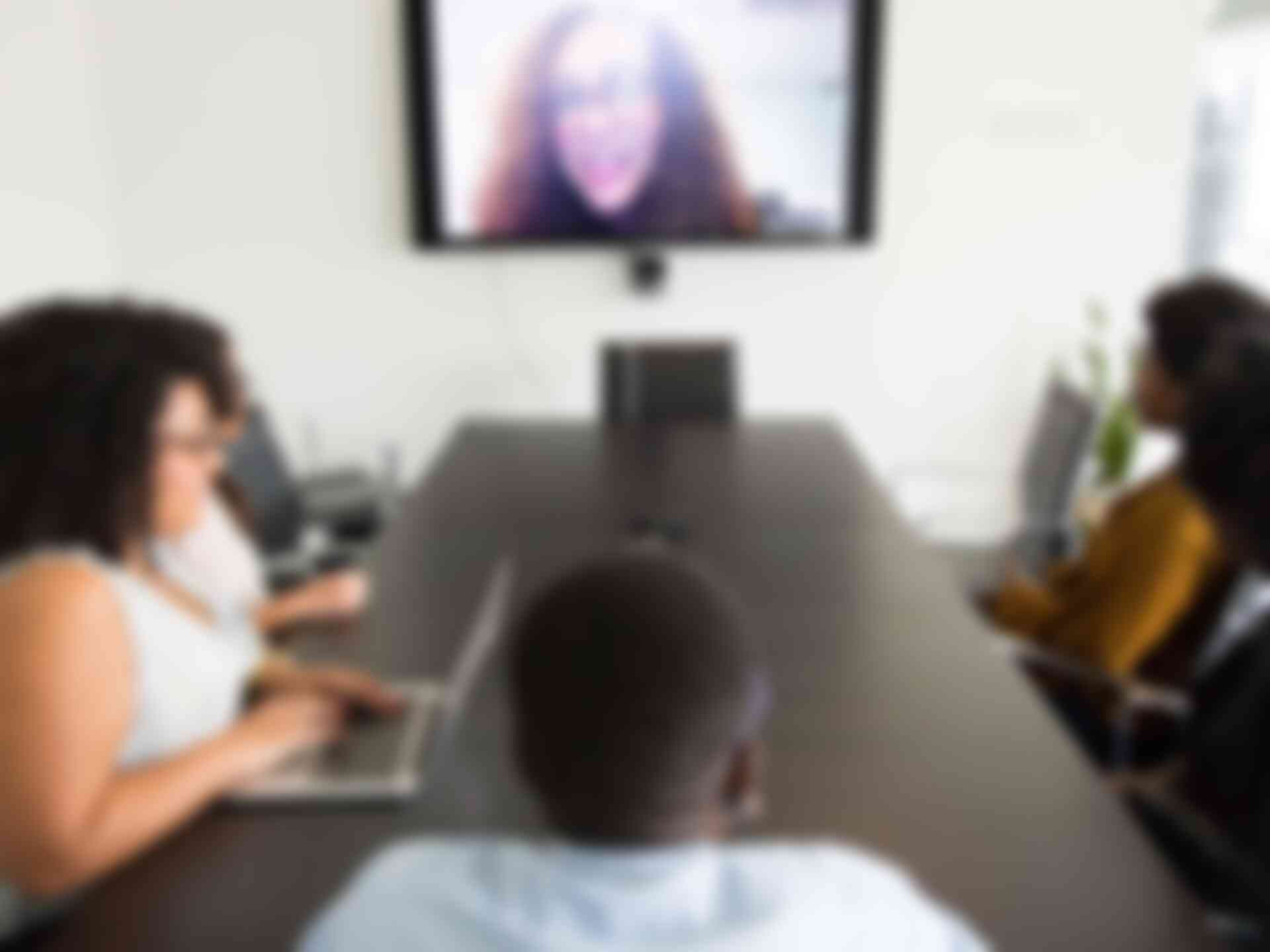Interpersonal
Making Meetings Work
Delivery Options
- Course: In-Person, half day
- Course: Virtual, 3 hours
- Coaching: In-Person/Virtual, TBD
Busy people appreciate meetings that are well organized and efficiently run. Yet many of us feel our time is wasted in meetings that are poorly planned and executed.


In this course, you learn how to plan, lead and contribute to meetings that are shorter and more productive to make the best use of everyone’s time.
Who should attend
This course is for anyone who spends time in meetings, either as a participant or as a leader. It is ideal for mixed groups as well as for intact work teams.
We suggest a maximum of 15 participants.
What you will learn
- show respect for participants by practicing meeting etiquette before, during and after your meeting
- clarify the objective of your meeting
- plan the topics, activities and flow to make the best use of participants’ time
- choose the right facilitation tools to gather ideas and make thoughtful decisions
- deliver a clear opening and a satisfying closing
- create an agenda that ensures participants come prepared
What to expect
This course is fast-paced and interactive. You participate in a series of group and individual activities to help apply what you learn to your back-at-work meetings. For a culminating activity, you design a meeting of your choice and share your plan with a small group. You and your group members give and receive feedback to fine-tune your approach.
You also receive a comprehensive manual with practical resources and job aids for post-course reference.
Course outlines
Course: In-Person, half day
Download course outline
PDF, 70 KB
Course: Virtual, 3 hours
Download course outline
PDF, 74 KB
Coaching: In-Person/Virtual, TBD
Download course outline
PDF, 72 KB
Course FAQs
Wavelength’s low participant-to-instructor ratio ensures that each participant receives individual feedback and coaching when necessary.
For writing and interpersonal skills courses, we recommend a 15:1 ratio to ensure no one slips through the cracks and the facilitator can provide coaching to those who need it.
For presentation skills courses, the ratio is 6:1. Participants each receive thoughtful feedback from the facilitator and from their peers on both content and delivery skills. This is essential for making a real difference, especially when presentations are high stakes.
Typically, we offer business-to-business training. Your manager or training department books a course with Wavelength for members of your team or organization. Occasionally, we also offer public open-enrollment courses to individuals so you can sign up for a session yourself.
Our course administration team works with your training coordinator to confirm participant numbers and rosters, course materials and logistics. We’re available to answer questions or troubleshoot any issues within our Learning Management System (LMS).
Two to three weeks before your course is scheduled to begin, you receive your pre-course instructions and participant materials. Your welcome email also includes an introduction to the facilitator, and you’re invited to reach out to them before the session with any questions, concerns or special requests. If you’re attending a virtual session, you also receive the meeting link and contact information for the course producer.
This question will be more relevant when we have online courses. Right now, the answer is no!
You spend your time learning new skills, putting then into practice, receiving feedback and finally applying these new skills to your own communication: a document, a presentation or a conversation. As you learn, you share your ideas, insights and feedback in large- or small-group discussions. In a virtually facilitated course, you interact with your peers in Chat or in small group breakouts.
Yes! Wavelength manuals are comprehensive, and they are an excellent post-course resource.
Participants use their manuals to practice new skills and can return to it whenever they need help preparing a high-impact document, presentation, meeting or conversation. Our manuals are:
- 100 plus pages of examples, exercises, templates and reference materials
- designed for self-directed learning: full of tips, examples, explanations, exercises and suggested answers. You can test yourself and practice skills you want to build
- full of modern business writing examples and phrases
- augmented with a list of reference books and websites if you want to learn more
- sustainable. We provide them in an easy-to-navigate digital format with fillable fields and instant feedback. Yes, you can still have hard copies.
You also receive tip sheets that summarize the learning at a glance for an on-the-go resource.
Personal Action Plans—we recognize that taking notes is a powerful way to cement the learning and we encourage you to update your Personal Action Plans with ideas you want to use as we go.
We use several strategies to maximize learning retention. To start, we encourage learners to capture ideas on a Personal Action Plan during the course for easy post-course reference when they return to their real-world jobs.
Participants are encouraged to follow up with their facilitator for up to four weeks after the course to receive additional coaching.
Also, to make it easier for graduates to retain and implement new skills and processes, we provide a Learning Booster Program. We send graduates six post-course micro learning emails, each containing a communication strategy and a quick practice activity. We send five boosters over five weeks. In the last week, we send a six-week post-course survey that asks participants about changes in their skill level, and we share the survey results with managers. Once the Learning Boosters are finished, we send graduates a monthly blog to continue reinforcing the learning.
We also provide follow-up coaching for individuals who want in-depth help, and refresher courses for groups who want to review content together.
We encourage managers to participate in training with their teams. This allows everyone to share a common language and criteria. We can also add a short session for managers, teaching them how to coach their direct reports, helping them become better independent writers.
Before most courses, we provide you with a pre-course survey so you can tell the facilitator about your communication needs, share what you would like to work on, and ask any questions you have. We often ask you to bring in a project to work on so you can apply your new skills and get some real work done while you learn. And we may ask to complete some pre-reading, which usually takes about 10 minutes, to save everyone’s time during the course.
You don’t need to turn your video on, but we encourage it.
To optimize your interactive experience, we may ask you to turn on your video during the session—if you can. We’d love to see you but understand that video-sharing isn’t always possible. We are happy to have you join us in whatever form works for you.
Yes. We take evaluation seriously: It is how we judge ourselves and continue to grow.
We provide a post-course evaluation after every course, asking participants to assess the effectiveness of our training and we share a summary report with you. We also ask our facilitators to evaluate us.
Our evaluation tools quantify both skill sets and behavior transfer. We are interested in measuring actual learning and application of new skills in the workplace, not just in finding out if participants liked our courses.
Just ask, and we provide them.
When we send you your pre-course email, you are invited to complete a questionnaire and are welcome to ask your facilitator questions. During the course, you have full access to your facilitator. You also have access to your facilitator for four weeks after your course ends.
For virtual courses, you need a computer with internet, camera and microphone. Although it’s possible to join virtual sessions on other devices, we recommend a computer or laptop for an optimal learning experience. For in-person courses, you only need your course materials.
Delivery methods

Course, In-Person
Learning in-person is a hands-on experience. You can ask the facilitator questions directly, and you have a whole room full of opinions and knowledge to draw from. You benefit from having organic conversations and building relationships, while enhancing your learning experience and boosting retention.

Course, Virtual
Learning virtually means all learners are at their computers, learning together in real time and led by a facilitator who is also remote. Technology makes it easy to interact using chat and breakout rooms. A virtually facilitated course is time- and cost-effective and gets excellent results.

Coaching, In-Person/Virtual
Work one-on-one with a coach with a customized curriculum that targets only your needs. Coaching is designed to maximize the results that are most important and the program is created after a detailed assessment.
Ready to book the course?
Find out how our writing, presentation and meeting skills workshops can help improve communication, productivity and effectiveness.
